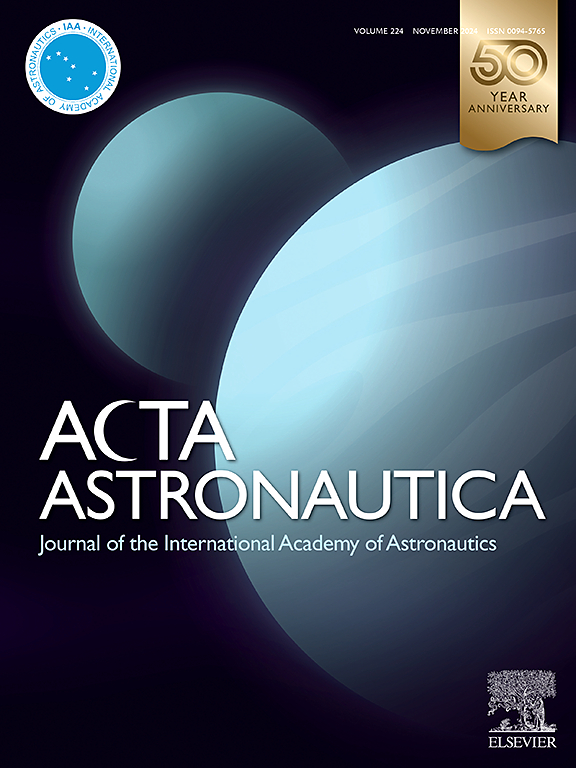Machine learning-based classification for Single Photon Space Debris Light Curves
IF 3.1
2区 物理与天体物理
Q1 ENGINEERING, AEROSPACE
引用次数: 0
Abstract
The growing number of man-made debris in Earth’s orbit poses a threat to active satellite missions due to the risk of collision. Characterizing unknown debris is, therefore, of high interest. Light Curves (LCs) are temporal variations of object brightness and have been shown to contain information such as shape, attitude, and rotational state. Since 2015, the Satellite Laser Ranging (SLR) group of Space Research Institute (IWF) Graz has been building a space debris LC catalogue. The LCs are captured on a Single Photon basis, which sets them apart from CCD-based measurements. In recent years, Machine Learning (ML) models have emerged as a viable technique for analysing LCs. This work aims to classify Single Photon Space Debris LCs using the ML framework. We have explored LC classification using k-Nearest Neighbour (k-NN), Random Forest (RDF), XGBoost (XGB), and Convolutional Neural Network (CNN) classifiers in order to assess the difference in performance between traditional and deep models. Instead of performing classification on the direct LC data, we extracted features from the data first using an automated pipeline. We apply our models on three tasks, which are classifying individual objects, objects grouped into families according to origin, and grouping into general types. We successfully classified Space Debris LCs captured on Single Photon basis, obtaining accuracies as high as 90.7%. Further, our experiments show that the classifiers provide better classification accuracy with automated extracted features than other methods.
基于机器学习的单光子空间碎片光曲线分类法
地球轨道上的人造碎片越来越多,由于存在碰撞风险,对在役卫星任务构成了威胁。因此,对未知碎片进行定性非常重要。光曲线(LC)是物体亮度的时间变化,已被证明包含形状、姿态和旋转状态等信息。自 2015 年以来,格拉茨空间研究所(IWF)的卫星激光测距(SLR)小组一直在建立空间碎片光曲线目录。LCs 是在单光子基础上捕获的,这使其有别于基于 CCD 的测量。近年来,机器学习(ML)模型已成为分析 LCs 的可行技术。这项工作旨在利用 ML 框架对单光子空间碎片 LCs 进行分类。我们使用 k-近邻(k-NN)、随机森林(RDF)、XGBoost(XGB)和卷积神经网络(CNN)分类器探索了 LC 分类,以评估传统模型和深度模型之间的性能差异。我们没有直接对 LC 数据进行分类,而是首先使用自动管道从数据中提取特征。我们在三个任务中应用了我们的模型,这三个任务分别是对单个物体进行分类、根据来源将物体归为一个系列,以及将物体归为一般类型。我们成功地对单光子捕获的空间碎片 LC 进行了分类,准确率高达 90.7%。此外,我们的实验还表明,与其他方法相比,分类器利用自动提取的特征提供了更好的分类准确性。
本文章由计算机程序翻译,如有差异,请以英文原文为准。
求助全文
约1分钟内获得全文
求助全文
来源期刊

Acta Astronautica
工程技术-工程:宇航
CiteScore
7.20
自引率
22.90%
发文量
599
审稿时长
53 days
期刊介绍:
Acta Astronautica is sponsored by the International Academy of Astronautics. Content is based on original contributions in all fields of basic, engineering, life and social space sciences and of space technology related to:
The peaceful scientific exploration of space,
Its exploitation for human welfare and progress,
Conception, design, development and operation of space-borne and Earth-based systems,
In addition to regular issues, the journal publishes selected proceedings of the annual International Astronautical Congress (IAC), transactions of the IAA and special issues on topics of current interest, such as microgravity, space station technology, geostationary orbits, and space economics. Other subject areas include satellite technology, space transportation and communications, space energy, power and propulsion, astrodynamics, extraterrestrial intelligence and Earth observations.
 求助内容:
求助内容: 应助结果提醒方式:
应助结果提醒方式:


